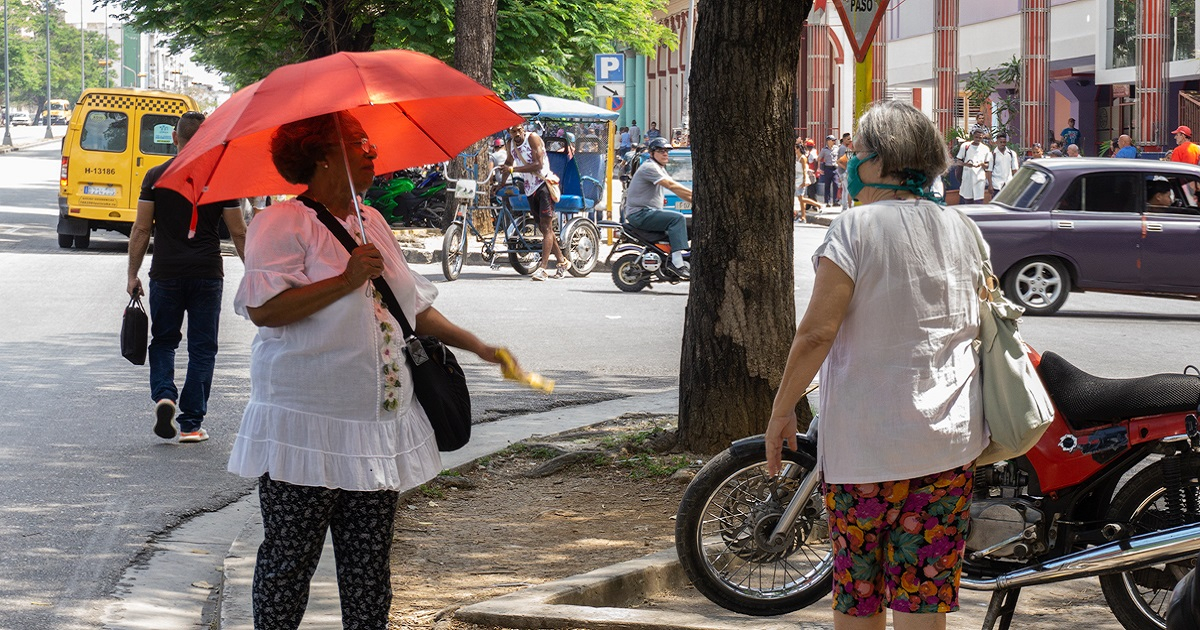
Cuba set a new record for absolute maximum temperature in its meteorological history, registering a mark of 39.3 degrees Celsius on thermometers, while the country is going through the coronavirus pandemic.
The record was obtained by the Veguitas meteorological station, in the province of Granma, and was accepted by the Climate Center of the Institute of Meteorology (Insmet) as a new national record for absolute maximum temperature.
The factors that influenced this rise were the weakness of the winds and the low cloud cover, which led to the marked warming of the air in the area where the Granma station is located, explained Doctor of Science Miriam Teresita Llanes Monteagudo, head of the Forecast Center. of Insmet.
“The lack of rain in recent days has favored the notable rise in temperatures,” Llanes told the official portal. Cubadebate.
The previous national record had been reached on June 30, 2019 and was 39.1 degrees Celsius, although the month of April is considered by experts to be the month with the highest absolute maximum temperature indicators in Cuba.
Therefore, the high temperatures were not exclusive to the Guantanamo stations, since the media from other territories of the archipelago also reported similar conditions.
Such is the case of Las Tunas, where the city woke up with intense fog as a result of the strong heat, conditioned also due to the total absence of clouds and a lot of sun.
All of this caused the suspension of water vapor and, therefore, fog in the early morning, according to Alexei Moreno Borges, deputy technical director of the Provincial Meteorological Center.
The city finally reported 38.3 degrees Celsius temperature.
“The historical value for the province is 38.1 degrees Celsius and it occurred on April 17, 1999. This, indeed, is a possible temperature record. Now the National Climate Center has to validate it,” explained the specialist.
Moreno Borges warned drivers that fog can recur on these dates and reduce visibility, which can cause traffic accidents.
Another heat record was recorded en Sancti Spíritus y Topes de Collantes. On Saturday the thermometers registered 36.8 degrees Celsius in the town of Yayabo.
“At the Sancti Spíritus meteorological station the current record until today was 36.5 degrees Celsius, established on April 24, 1956 and then equaled on April 25, 2015, so by registering 36.8 degrees Celsius today, Saturday, the previous one is broken and this new one is established,” reports a note issued by the Forecast Group of the Provincial Meteorological Center.
The Topes de Collantes mountain weather station, for its part, reported 32.6 degrees as the maximum temperature, which constitutes a new record there, where the previous one only reached 32 degrees, which occurred on the 27th of the same month, but in 1995.
“This situation has been motivated by the persistence of mostly sunny skies associated with the marked influence of high pressures throughout the troposphere that prevents the development of abundant afternoon cloudiness and rain processes and imposes variable weak winds, with the establishment of the confluence towards inland areas of the coastal breeze regime,” the specialists argue.
Likewise, experts from the Climate Center of the Institute of Meteorology predicted average minimum and maximum temperatures for April above the historical average throughout the country, with anomalies between 0.4 and 0.7 degrees.
On previous dates, entities linked to the foreign tourism sector in Cuba used the heat in Cuba as an incentive to attract tourism while the coronavirus pandemic spread throughout Europe, under the pretext that high temperatures stopped contagion.
The advertising, without any solid scientific basis to support it, generated controversy among Cubans inside and outside the Island. Even the comedian Ulises Toirac criticized these messages on social networks that promoted the country as a safe destination, at the risk of increasing the chances of contagion with the arrival of people from countries with high levels of infection.
After numerous complaints, the regime would eventually decide to close air and sea borders to foreign visitors, several days after the first cases were identified in three Italian tourists.
In its latest report, the Cuban public health system confirmed 49 new cases of coronavirus in the country, which means that the total number of patients diagnosed with COVID-19 on the island amounts to 669. A total of 18 people have lost their lives. because of the outbreak.
What do you think?
COMMENTFiled in: